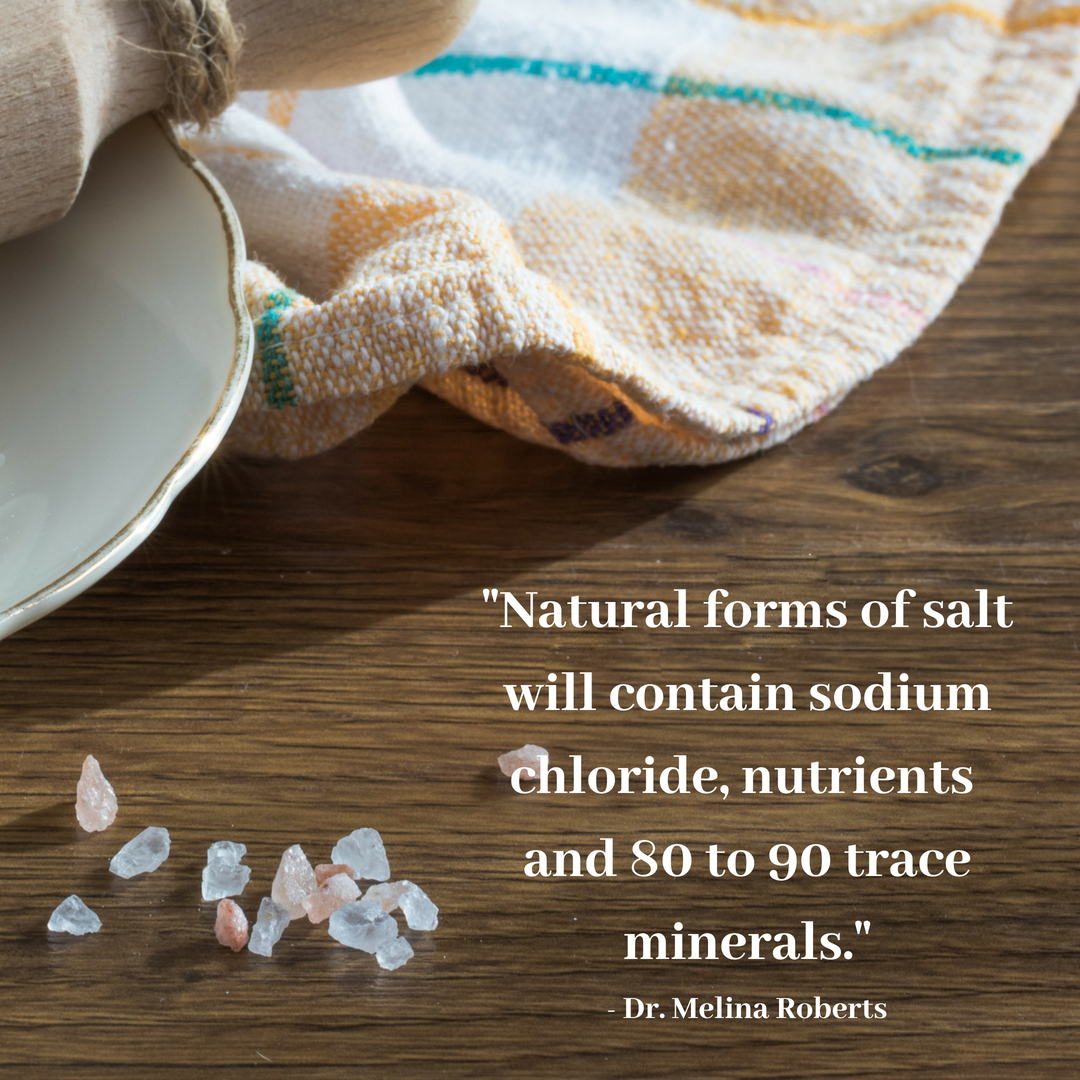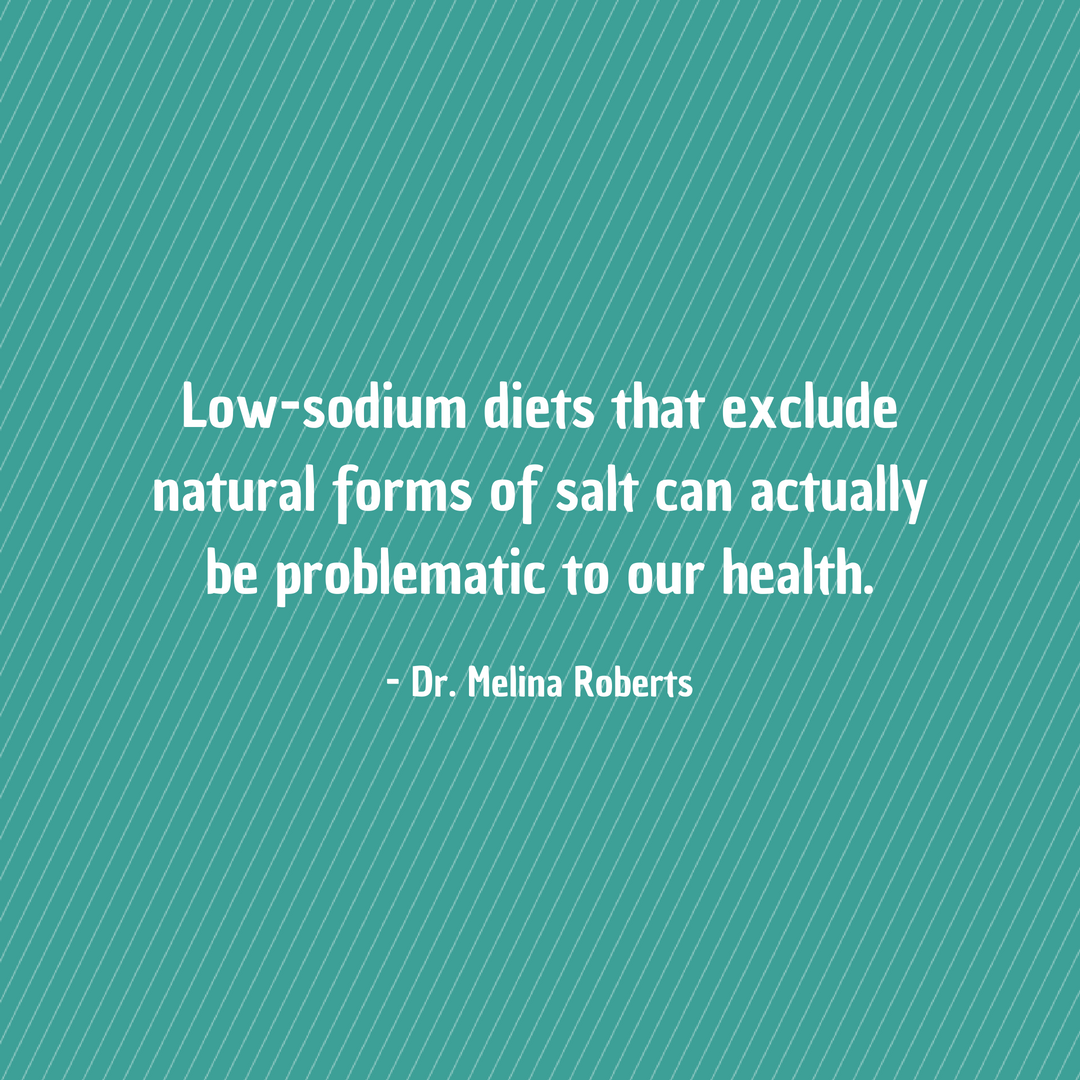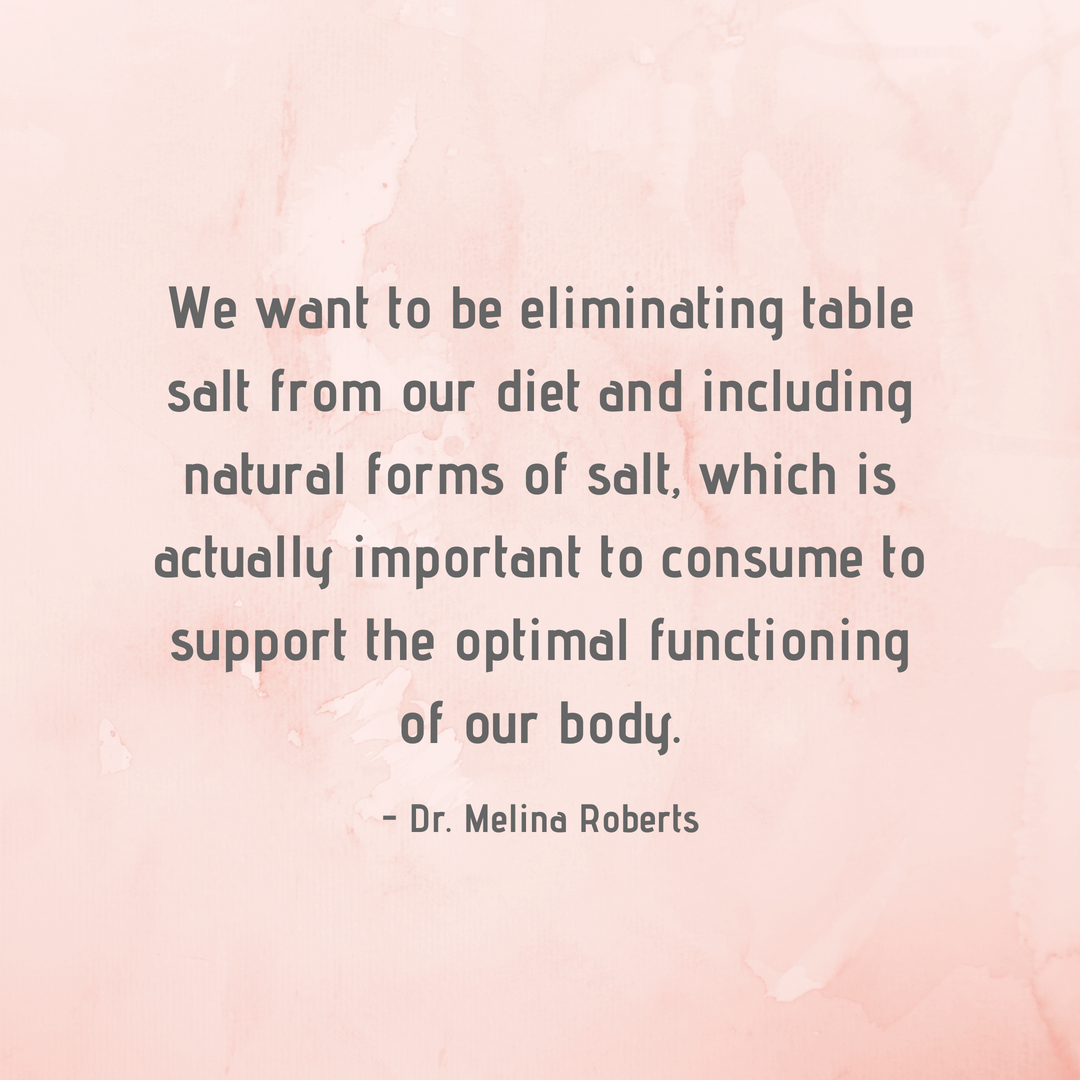We need to decipher between table salt and natural forms of salt.
Table salt is made up of mainly sodium chloride (NaCl), it is chemically produced, bleached, and does not contain nutrients or trace minerals. Table salt lacks nutritional value.
Most of the studies that have been done on salt, have been done using table salt. Since table salt is inexpensive to produce, there is a high amount of table salt in processed foods. When people are consuming high amounts of processed foods, they are also consuming high amounts of table salt. There are many studies that demonstrate the ill-effects of salt on our human health, such as contributing to hypertension, water retention, edema. An important distinction to make is that those studies were done using table salt. There is a distinction between table salt and naturally occurring salts.
Natural forms of salt will contain sodium chloride, nutrients and 80 to 90 trace minerals. We need these trace minerals for every biochemical process in the body. Some natural forms of salt include Himalayan salt and sea salt. We actually require salt for our body to function properly. We need salt for proper fluid balance, muscle contraction, and nerve impulses, but we need it in the natural form not the chemical form. We need small amounts of the natural form of salt. Typically that amount is one teaspoon per day. Natural forms of salt is even beneficial for those with hypertension.
Low-sodium diets that exclude natural forms of salt can actually be problematic to our health. We want to be eliminating table salt from our diet while including natural forms of salt, which is actually important to consume to support the optimal functioning of our body.




